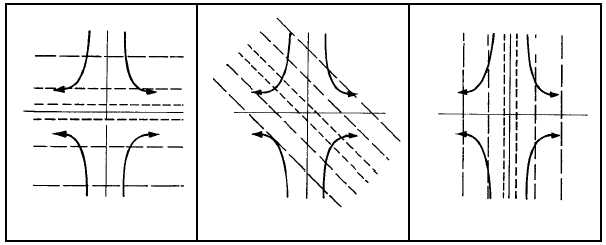cold front overtakes the warm front and closes the
warm sector, an occlusion is formed (view E). This is
the time of maximum intensity of the wave cyclone.
As the occlusion continues to extend outward, the
cyclonic circulation diminishes in intensity (the
low-pressure area weakens), and the frontal movement
slows down (view F). Sometimes a new frontal wave
may begin to form on the westward trailing portion of
the cold front. In the final stage, the two fronts become
a single stationary front again. The low center with its
remnant of the occlusion has disappeared (view G).
Table 4-2 shows the numerical average life cycle of a
typical unstable wave cyclone from initial development
to cyclolysis. It is only intended to be used as a guide in
areas where reports are sparse.
FRONTOGENESIS AND FRONTOLYSIS
LEARNING OBJECTIVE: Describe the
conditions necessary for frontogenesis and
frontolysis,
and
identify
the
world
fronto-genetical zones.
CONDITIONS NECESSARY FOR
FRONTOGENESIS
Frontogenesis is the formation of a new front or the
regeneration of an old one. Frontogenesis takes place
only when two conditions are met. First, two air masses
of different densities must exist adjacent to one another;
and second, a prevailing wind field must exist to bring
them together. There are three basic situations, which
are conducive to frontogenesis and satisfy the two basic
requirements.
The windflow is cross isothermal and flowing from
cold air to warmer air. The flow must be cross
isothermal, resulting in a concentration of isotherms
(increased temperature gradient). The flow does not
have
to
be
perpendicular;
however,
the
more
perpendicular the cross isothermal flow, the greater the
intensity of frontogenesis.
The winds of opposite air masses move toward the
same point or line in that cross-isothermal flow. A
classic example of this situation is the polar front where
cold polar air moves southward toward warmer
4-24
Time (hours)
Central Pressure (mb)
Direction of Movement
(toward)
Speed of Movement
(knots)
NE to SE or
(quad)
30-35
1,012-1,000
Wave Cyclone
1000-988
NNE to N
(arc)
20-25
984-968
N to NNW
(arc)
10-15
998-1,004
0-5
Occlusion
Mature Occlusion
Cyclolysis
0
12-24
24-36
36-72
The
symbol indicates that the filling center drifts slowly in a counterclockwise direction along
an approximately circular path about a fixed point.
AG5t0402
Table 4-2.—Numerical Characteristics of the Life Cycle of an Unstable Wave Cyclone
T1
T2
T3
T4
T5
H
L
X
X
L
H
Y
T6
Y
T1
T2
T3
T4
T5
T6
H
L
Y
X
X
L
H
X
T1
T2
T3
T4
T5
T6
H
L
Y
X
L
H
A.
IDEALLY
FRONTOGENETIC
B.
CRITICALLY
FRONTOGENETIC
C.
IDEALLY FRONTOLYTIC
AG5f0423
Y
Figure 4-23.—Perpendicular deformation field.




